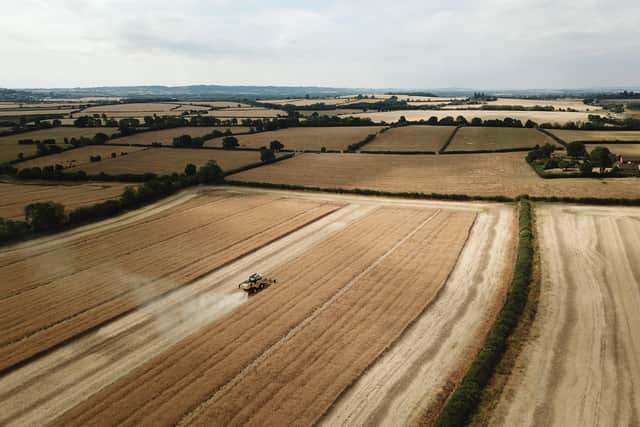Farmland values expected to hold firm in the face of 40-year inflation high
and live on Freeview channel 276
Data tracking how the asset is affected when the UK economy comes under pressure – from high interest rates or the global financial crisis for example – demonstrates that land tends to hold its value, seeing capital growth over the medium and long terms.
Since land values peaked in 2016, farmers and investors have seen their asset plateau, resulting in a very slow decrease of about five per cent over eight years. This can be attributed to uncertainty surrounding Brexit and the transition away from area-based subsidies. However, in the past 30 years, land values have grown by 369 per cent – the equivalent of 5.3 per cent per year.
Advertisement
Advertisement
Carter Jonas expects farmers and investors to view land as a means to protect wealth as inflationary pressures continue across the UK.


Sophie Davidson, senior research analyst at Carter Jonas, explained: “Over the past 30 years, farmland values have outperformed inflation and grown at a rate that exceeds many other common investments. With a limited supply of land coming to the market, increasing demand from alternative investors and new income stream opportunities, we believe that land prices will rise in the medium term, and continue its long-term positive trajectory.
“The resilience and ability to rebound quickly is promising for land values in the face of the current high inflation rates and low economic growth.” Average land values fell slightly as interest rates reached 8.4 per cent in 1991.
They soon recovered as wheat prices rose rapidly and increased profitability for cereal farmers. In real terms, values rose by 59.5 per cent from 1991 to 2001. Tenancy reforms making land more attractive to investors contributed to this rise.
Advertisement
Advertisement
Other than a slight dip in 2009, rising inflation and a steep fall in economic growth during the global financial crisis drove demand for farmland by investors looking for relatively safe-haven assets.
Even when the housing market crashed, the farmland market held strong. Between 2002 and 2015, average farmland values in real terms increased by a healthy 95.9 per cent, or 5.3 per cent when annualised. Of course, part of the value of land for farmers hinges on profitability, which is currently being negatively impacted by a huge increase in input costs.
“According to data from the AHDB, the price of fertiliser has grown by 179.2 per cent in the 12 months to April 2022,” Ms Davidson continued. “Likewise, crude oil has seen an annual growth rate of 67.0 per cent and red diesel has increased by 70.3 per cent. In contrast, CPI rose by 9.0 per cent in the same period, significantly slower than most commodities.” Although the price of outputs has increased, it has not been at the same rate, negatively impacting profitability.
She added: “As such, there is a short-term and unpredictable disruption to agriculture.” However, new opportunities and income streams for landowners are helping to create optimism and drive prices.
Advertisement
Advertisement
Andrew Chandler, head of Farm Agency, said: “Farm incomes can also be supplemented through Biodiversity Net Gain (BNG) credits, Nitrate Neutrality credits or carbon sequestration provisions.
“A new era of structural change has sparked the upsurge of environmental buyers who bring ‘green money’ to the market to offset the effects of development. These emerging natural capital-based income streams will serve to benefit the market and create demand for land and the environmental solutions it can provide.”
A resurgence in ‘lifestyle buyers’ has also increased demand and caused prices to soar, with a two-year annualised growth rate of 11.4 per cent in lifestyle land values. “With an influx of new buyers creating competition in the market and as environmental policies evolve, we can expect land values to push upwards and continue their longer-term rate of growth.”